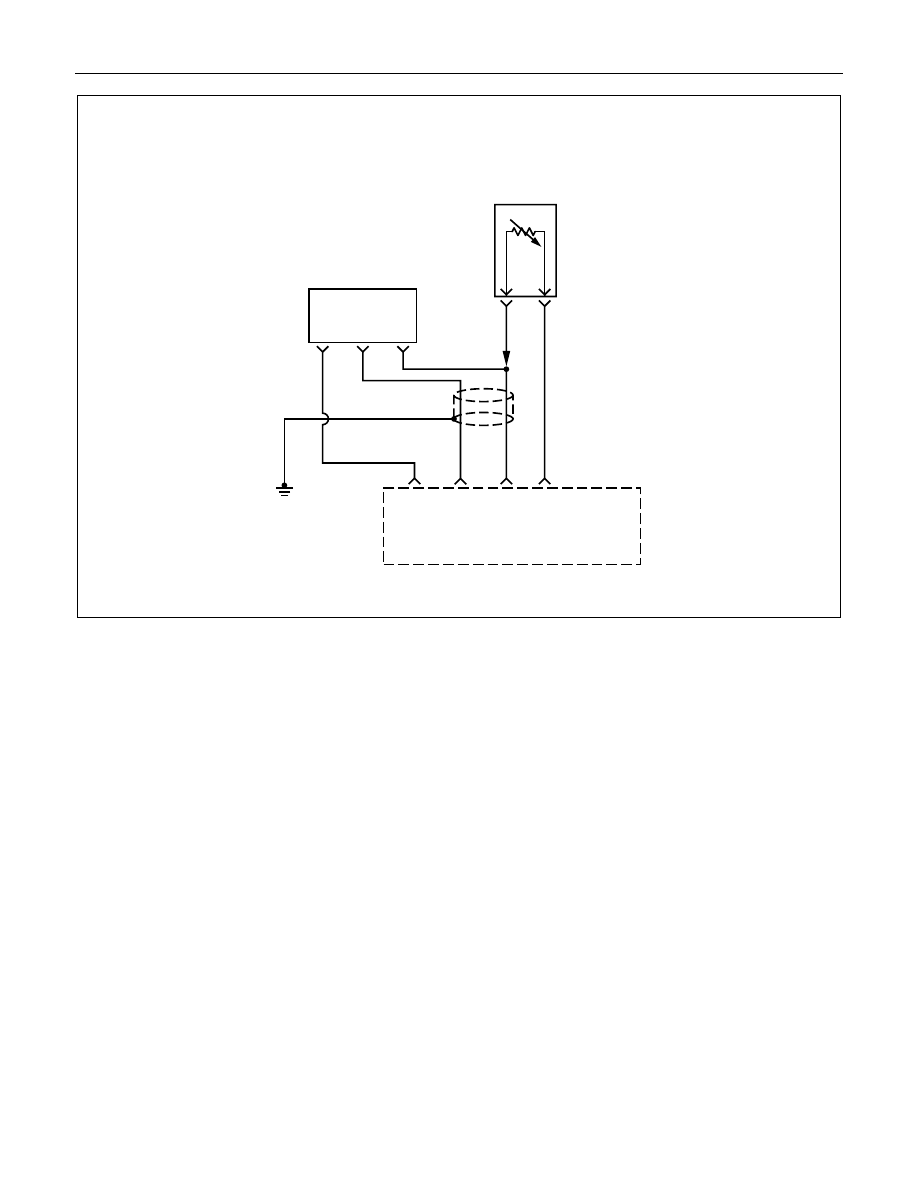Isuzu engine C22NE / 22LE / 20LE. Manual - part 81

DRIVEABILITY AND EMISSIONS 6E1-153
0.75
G
0.75
L
0.5
R
0.5
GRN
0.5
L/R
Engine
Control
Module
(ECM)
A3
F14
B1
B8
ECT
Sensor
Input
Sensor
Ground
Engine
Coolant
Temperature
(ECT)
Sensor
B
A
TPS
HI
OUT
LO
DIAGNOSTIC TROUBLE CODE (DTC) (Flash DTC = 14)
ENGINE COOLANT TEMPERATURE (ECT) SENSOR CIRCUIT HIGH INPUT
Circuit Description
The engine coolant temperature (ECT) sensor is a
thermistor mounted in the engine coolant stream. The
engine control module (ECM) applies a voltage (about
5 volts) through a pull-up resistor to the ECT signal
circuit. When the engine coolant is cold, the sensor
(thermistor) resistance is high, therefore the ECM will
measure a high signal voltage. As the engine coolant
warms, the sensor resistance becomes lower, and the
ECT signal voltage measured at the ECM drops. With
a fully warmed up engine, the ECT signal voltage
should measure about 1.5 to 2.0 volts. If the ECM
detect a continuous open in the ECT sensor or circuit,
then a code 14 will set.
Conditions for Setting the DTC
• Engine running time is longer than 10secs.
• The ECT sensor signal indicates an engine coolant
temperature greater than 140°C (284°F).
Action Taken When the DTC Sets
• The ECM will illuminate the malfunction indicator
lamp (MIL) fault is detected.
• The ECM will substitute the ECT reading with a
default engine coolant temperature value. The
default value is based on start-up intake air
temperature and running time.
Conditions for Clearing the MIL/DTC
Once the ECM determines that a fault(s) has been
rectified then the CEL will switch OFF, although the
fault code will remain in the ECM memory.
Any fault codes will remain in ECM memory until -
1. They are cleared by disconnecting the Battery for
more than 30 seconds.
2. A service tool such as Tech 2 is used to clear them.
3. Ten consecutive starts without logging a fault.